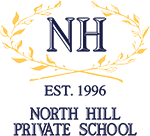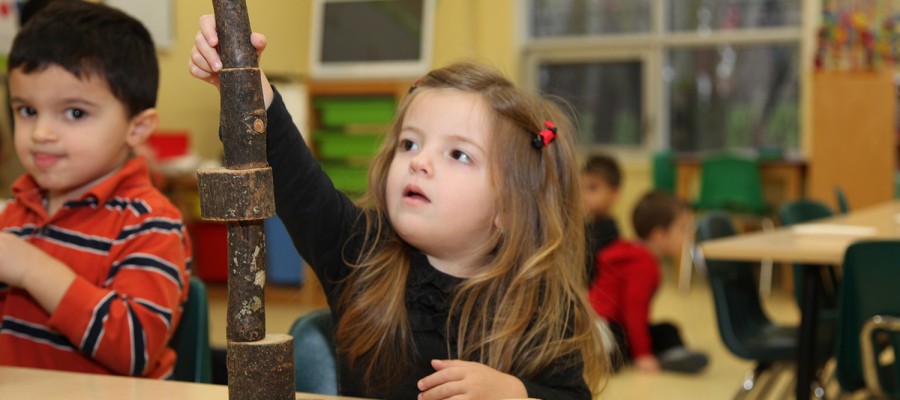Key concepts of Reggio Emilia Project Approach:
The child as protagonist. Children are strong, rich and capable. All children have preparedness, potential, curiosity, and interest in constructing their learning, negotiating with everything their environment brings to them. Children, teachers, and parents are considered the three central protagonists in the education process.
The child as collaborator. Education has to focus on each child in relation to other children, the family, the teachers, and the community rather than on each child in isolation. There is an emphasis on work in small groups. This practice is based on the social constructivist model that supports the idea that we form ourselves through our interaction with peers, adults, things in the world, and symbols.
The child as communicator. This approach fosters children’s intellectual development through a systematic focus on symbolic representation, including words, movement, drawing, painting, building, sculpture, shadow play, collage, dramatic play, and music, which leads children to surprising levels of communication, symbolic skills, and creativity. In this way, they make their thinking visible through their many natural “languages”.
Hailed as the best pre-schools in the world by Newsweek magazine in 1991, the Reggio Emilia Approach to early childhood education has attracted the worldwide attention of educators, researchers and just about anyone interested in early childhood education best practices.
 The conception of the Reggio Emilia Approach was created by the visonary founding director, Loris Malaguzzi. The very first school was built in 1945 in a small village near the City of Reggio Emilia, Italy, from proceeeds of the sale of an army tank, a few trucks and horses left behind by the Germans during World War II. Educators, parents and children began working together after the War to reconstruct society and to build an exemplary system of municipal preschools and infant-toddler centers. Under Malaguzzi’s leadership, the Reggio Approach evolved from a parent cooperative movement into a city run system that exercises a leadership role in Italy and increasingly around the world!
The conception of the Reggio Emilia Approach was created by the visonary founding director, Loris Malaguzzi. The very first school was built in 1945 in a small village near the City of Reggio Emilia, Italy, from proceeeds of the sale of an army tank, a few trucks and horses left behind by the Germans during World War II. Educators, parents and children began working together after the War to reconstruct society and to build an exemplary system of municipal preschools and infant-toddler centers. Under Malaguzzi’s leadership, the Reggio Approach evolved from a parent cooperative movement into a city run system that exercises a leadership role in Italy and increasingly around the world!
Upon close examination of the features of this philosophy will soon reveal that the educators have been serious readers of John Dewey, Jean Piaget, Lev Vygotsky, David Hawkins, Jerome Bruner, Howard Gardner and other world renowned scientists and philosophers. In fact, Reggio Emilia educators have continued to keep abreast of the latest research in child development and education in other countries. At the same time, though, they continue to formulate new interpretations and new hypotheses and ideas about learning and teaching through their daily observations and practice of learning along with the children.
 Today, the Reggio Approach is famous world wide, thanks in part to the “One Hundred Languages of Children” travelling exhibit, which has been displayed in many cities around the world, and through conferences and lectures, we have all been given opportunities to enter into our own dialogue with these experiences. According to Malaguzzi, the Hundred Languages exhibit symbolises the countless different ways that children have of learning and interpreting the world around them and of expressing themselves.
Today, the Reggio Approach is famous world wide, thanks in part to the “One Hundred Languages of Children” travelling exhibit, which has been displayed in many cities around the world, and through conferences and lectures, we have all been given opportunities to enter into our own dialogue with these experiences. According to Malaguzzi, the Hundred Languages exhibit symbolises the countless different ways that children have of learning and interpreting the world around them and of expressing themselves.
The Reggio Emilia Approach has been reinterpreted all over the world in varied settings and contexts. North Hill Private School and its faculty has been inspired by this approach since 1996. We are constantly being challenged by this approach and are continually seeking to understand the relationship between its fundamental principles and our unique community in York Region.
Forward: Complementary Perspectives on Reggio Emilia
 By: Howard Gardner
By: Howard Gardner
“Midst the multitude of books about education issued these days, few stand out. This book that you hold in your hands does. An integrated set of essays on a unique approach to early childhood education, The Hundred Languages of Children documents the remarkable set of schools that have evolved over almost 40 years in Reggio Emilia in northern Italy. At the same time, the book constitutes a profound meditation in the nature of early human nature, and the ways in which it can be guided and stimulated in different cultural milieus. Anyone with an interest in the education of children should read it; few who do so will remain unaffected by the experience…………..”
Multiple Intelligences Theory
Howard Gardner’s Multiple Intelligence Theory was first published in Howard Gardner’s book, Frames Of Mind (1983), and quickly became established as a classical model by which to understand and teach many aspects of human intelligence, learning style, personality and behaviour – in education and industry. Howard Gardner initially developed his ideas and theory on multiple intelligences as a contribution to psychology, however Gardner’s theory was soon embraced by education, teaching and training communities, for whom the appeal was immediate and irresistible – a sure sign that Gardner had created a classic reference work and learning model.
This simple grid diagram illustrates Howard Gardner’s model of the seven Multiple Intelligences at a glance
| intelligence type | capability and perception |
| Linguistic | words and language |
| Logical-Mathematical | logic and numbers |
| Musical | music, sound, rhythm |
| Bodily-Kinesthetic | body movement control |
| Spatial-Visual | images and space |
| Interpersonal | other people’s feelings |
| Intrapersonal | self-awareness |


